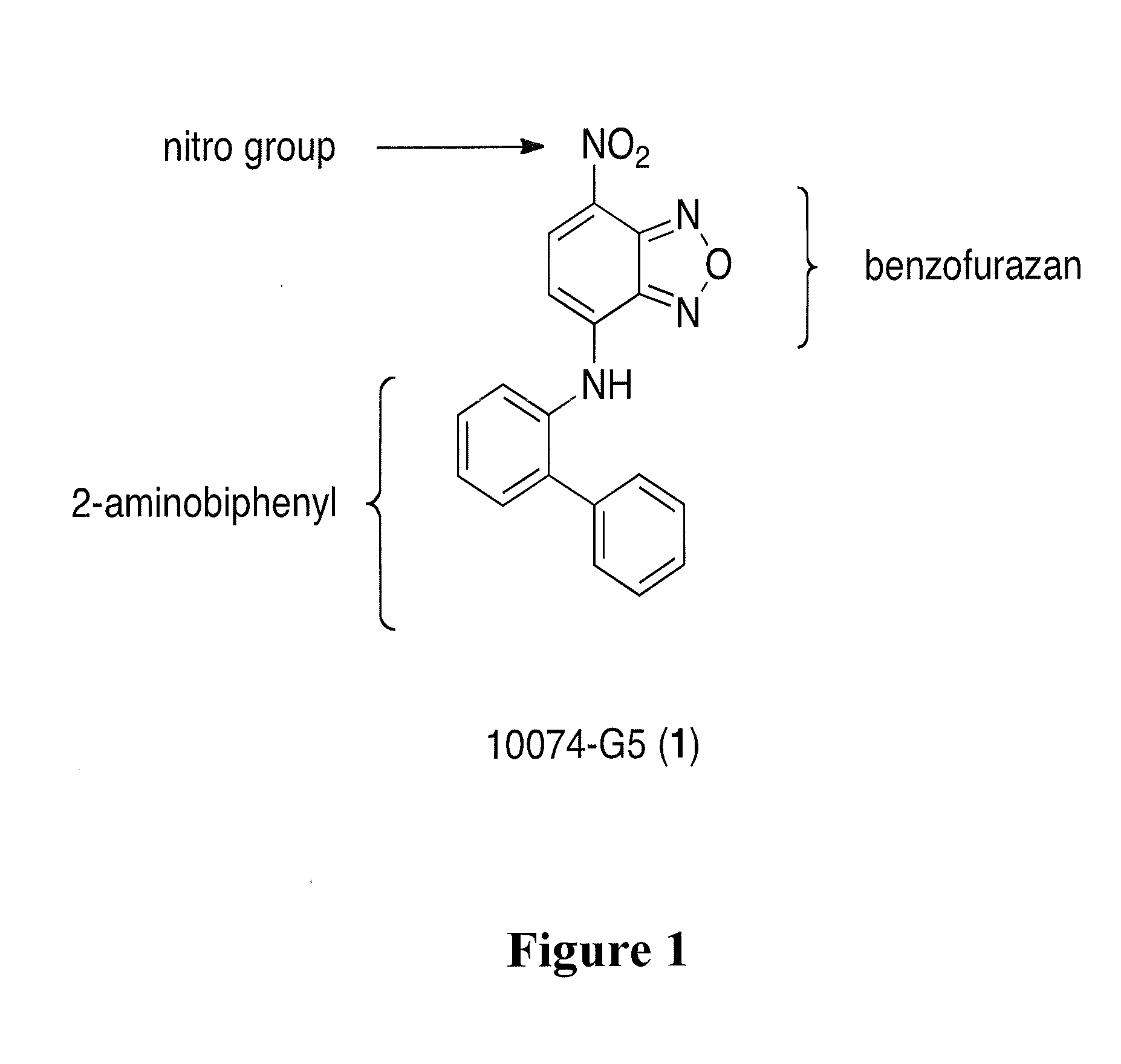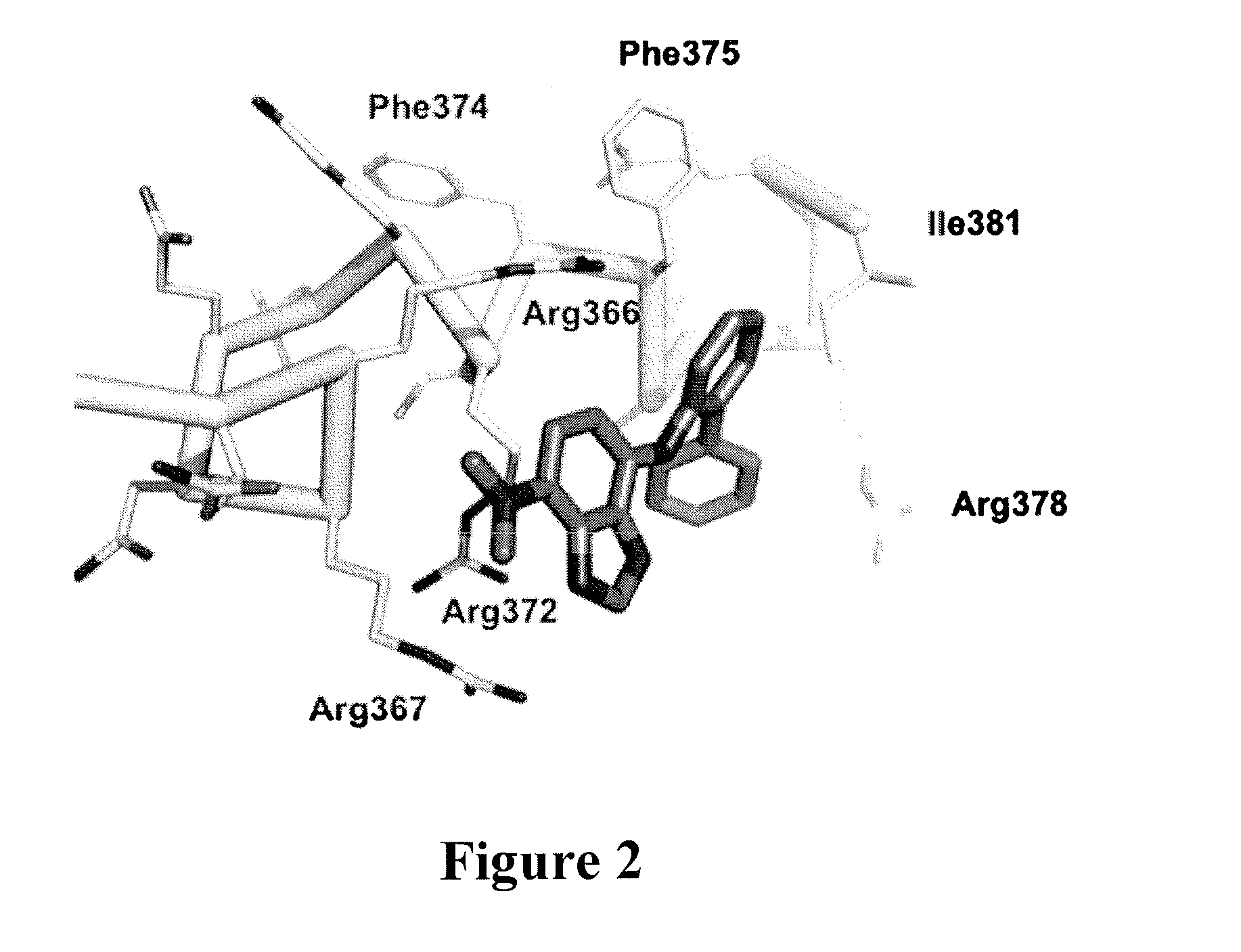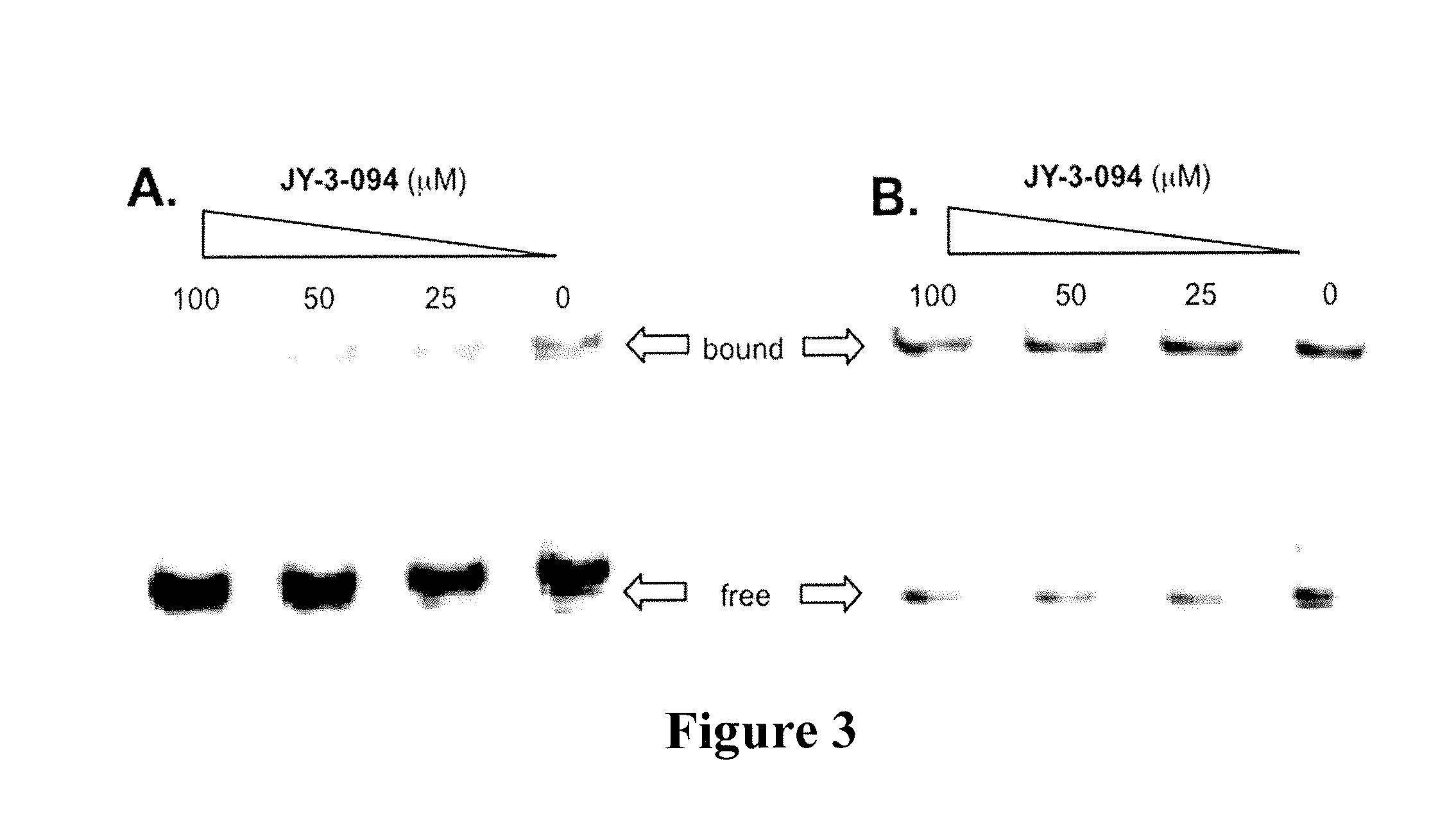Potent analogues of the c-myc inhibitor 10074-g5 with improved cell permeability
a technology of c-myc inhibitor and cell permeability, which is applied in the field of potent analogues of the cmyc inhibitor 10074g5 with improved cell permeability, can solve problems such as affecting its association
- Summary
- Abstract
- Description
- Claims
- Application Information
AI Technical Summary
Benefits of technology
Problems solved by technology
Method used
Image
Examples
Embodiment Construction
[0039]The Myc-Max dimerization inhibitors: the rhodanine derivative (Z)-5-(4-ethylbenzylidene)-2-thioxothiazolidin-4-one (10058-F4) and N-([1,1′-biphenyl]-2-yl)-7-nitrobenzo[c][1,2,5]oxadiazol-4-amine (10074-G5)(22) were characterized and it was found that the mode of Myc-Max dimerization inhibition by these two small-molecules is through the direct binding of the Myc monomer (10058-F4 binds Myc402-412, 10074-G5 binds Myc363-381), thereby limiting its ability to interact with Max (30, 31). FIG. 1 shows the chemical structure of Myc inhibitor 10074-G5 and its three components, that being, the biphenyl, the benzofurazan and the nitro group.
[0040]It has recently been demonstrated that 10074-G5 binds Myc in the region Arg363-Ile381 (FIG. 2) (30,31). More particularly, NMR NOESY analysis and docking studies independently suggested that 10074-G5 binds in a cavity that is created by a kink (Asp379-Ile381) in the N-terminus of an induced helical domain (Leu370-Arg378), with the biphenyl moi...
PUM
| Property | Measurement | Unit |
|---|---|---|
| body weight | aaaaa | aaaaa |
| hydrophobic | aaaaa | aaaaa |
| affinity | aaaaa | aaaaa |
Abstract
Description
Claims
Application Information
 Login to View More
Login to View More - R&D
- Intellectual Property
- Life Sciences
- Materials
- Tech Scout
- Unparalleled Data Quality
- Higher Quality Content
- 60% Fewer Hallucinations
Browse by: Latest US Patents, China's latest patents, Technical Efficacy Thesaurus, Application Domain, Technology Topic, Popular Technical Reports.
© 2025 PatSnap. All rights reserved.Legal|Privacy policy|Modern Slavery Act Transparency Statement|Sitemap|About US| Contact US: help@patsnap.com



